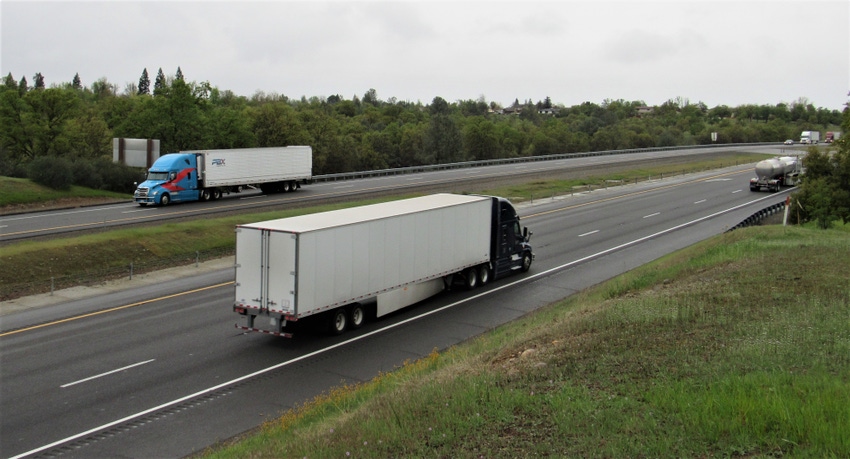
Trucking, the primary method of shipping product across the U.S., has been experiencing a labor shortage for 20 years -- during which time the development of self-driving freight vehicles has been improving.
Just two years ago, Popular Mechanics magazine reported that a startup Cupertino intelligence company completed what was called “the world’s first autonomous cross-country freight delivery trip,” making a 41-hour, 2,800 mile delivery of 40,000 pounds of butter through a dozen states to a small town in Pennsylvania -- without a driver at the wheel.
That opened the floodgates for driverless long-haul trucking as transit times could be cut by between 30-50 percent, striking unemployment fears into the hearts of the current 3+ million truck drivers.
One of the vanguard companies is San Diego-based TuSimple that recently went public raising over a billion dollars in an initial public stock offering. With a freight hub and technology center in Tucson, TuSimple is seen as a leader in the push toward completely self-driving freight trucks, running paid loads from Tucson to Texas and California for the past four years (with a driver and engineer on board until 2024 approval is given for completely driverless operations).
Jim Mullen, the company’s Chief Administrative Officer, formerly with the Federal Motor Carrier Safety Administration, spoke to the subject of innovative sustainability trends at the Fresh Produce Association of the Americas Spring Policy Summit.
“Ten percent of our nation's corridors move almost 80% of goods and we’re initially focusing on the South and Southwest freight corridors, a massive accessible market we think is ripe for autonomy,” he said.
In that market since 2015 and concentrating solely on developing technology for autonomous trucks, TuSimple’s drill-down is the long-haul middle-mile, not the final mile, but depot-to-depot.
World champions
Accepting the title of Computer Vision World Champions for its advanced camera technology, Mullen said: “We’ve developed technology that we believe nobody else in the industry has developed and we’ve been road demonstrating it for the last five years, the first in the autonomous truck space to do what we call surface road, going over surface streets, navigating left turns and traffic signals and merging onto the Interstate from Tucson to Phoenix and back, daily.
“We also believe we’re the first developer in the AV (automated vehicle) space to have a go-to-market strategy in our autonomous freight network and our growing partnerships with UPS, the Postal Service, Union Pacific, US Xpress, and others.”
Mullen said that pushing against the headwinds of three aspects of autonomous trucking was most challenging -- a lack of drivers, capacity, and service restrictions; the safety aspect; and the environmental aspect.
“The long-haul driver shortage is real,” he said. “The American Trucking Association talks about a shortage of 60,000 drivers currently with a predicted shortfall of 100,000 drivers in the next two years. Over 55,000 drivers have been taken out of the system after testing positive for drugs and alcohol and predictions are that that will continue to be a problem. Plus, the median age of a truck driver is now 47 which is already five years older than the median workforce age in the U.S. And those demographics will continue to tighten.”
One of his former responsibilities involved the safety of a fleet of 10,000 drivers, so that aspect of transporting freight on the highway ranks at the top of his list.
“We have about 5,000 fatalities and 30,000 serious injuries every year in the U.S. involving crashes with large trucks, crashes mainly caused by human error like driver distraction, driver fatigue, or noncompliance with the rules of the road,” Mullen said. “Autonomous trucks are going to help solve those problems.”
Decreased risk
Another benefit he alluded to would be a decrease in insurance and risk costs and premiums. “Trucking companies have been taking bankruptcy or folding entirely as a result of insurance costs and claims causing them to shut their doors. We can help the industry solve those safety problems and save money in the process.”
Appropriately speaking during the observance of Earth Day April 22, Mullen lauded the fact that AV trucks were greener than manually-driven trucks.
“The University of California, San Diego compared twelve months of our data comparing the two methods and that data showed a 10% improvement in miles-per-gallon in the autonomous vehicles versus the driver-driven,” he said. “We’re confident our vehicles are greener and more fuel-efficient to help the industry deal with its carbon footprint.”
Relying heavily on sensor technology and high definition cameras, TuSimple touts its long-range HD camera perception of a thousand meters in advance.
“We have 360 degree awareness around our vehicles,” he said. “When you’re navigating in-town surface streets, seeing only a couple hundred meters isn’t sufficient in a 70-foot-long commercial vehicle that takes a bit of time to execute left-hand turns and other maneuvers.”
The company says its depot-to-depot hauling “will bring increased return for growers because of a greater flexibility in harvest times.” With a plan to roll out a purpose-built truck in 2024, the company goal is to implement a plug-and-play effort by taking driven trucks off the road and replacing them with autonomous vehicles.
“Consistent capacity, what most shippers and freight haulers look for, is a long-standing issue and a solution for that is in our wheelhouse to provide a return on investment in high-volume repetitive lanes, something that fits very nicely with the produce industry.”
To see the trucks in action, visit https://www.tusimple.com/.
About the Author(s)
You May Also Like




